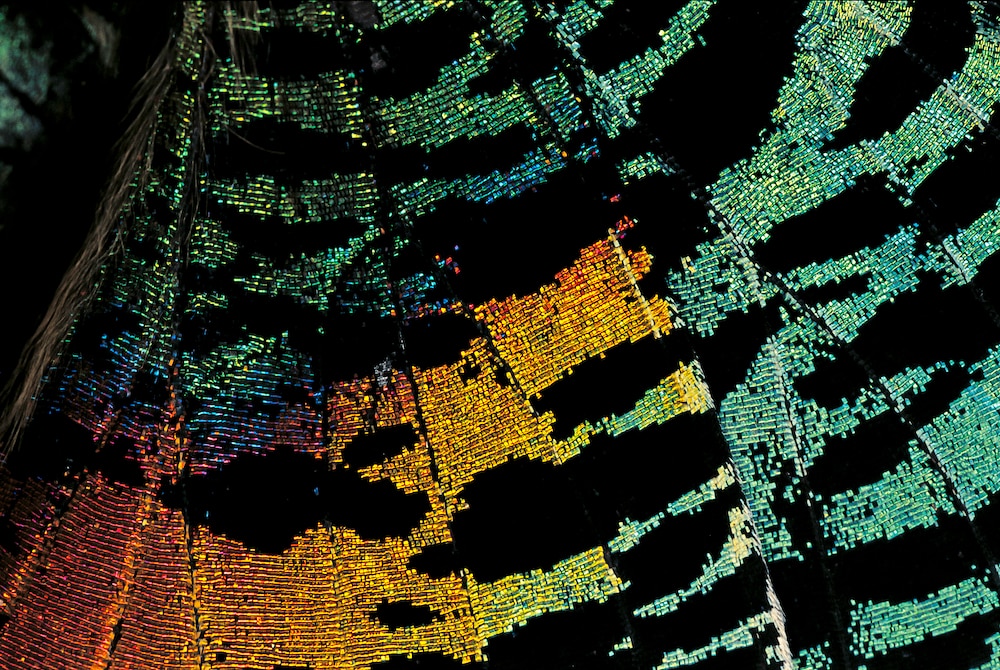Create a free profile to get unlimited access to exclusive videos, sweepstakes, and more!
Acoustic camouflage! Moths’ anti-echolocation wings are inspiring soundproof wallpaper
Evolution beats engineering every time.

In the 2005 horror film The Descent (now streaming on Peacock!), a group of cavers finds themselves trapped in an unmapped cave system and at the mercy of a group of pale humanoid creatures called crawlers. As the story progresses, they discover that like many cave-dwelling animals, the crawlers are blind and depend on sound to navigate the world and hunt. Equipped with that knowledge, the climbers attempt to remain quiet while looking for a route back to the surface.
Evolution is good at giving predators the tools to hunt their prey, using the senses in ways which feel totally alien to us. Bats are notably talented at using targeted sound to echolocate prey animals in the air. However, evolution isn’t a one-way street, it also equips prey animals with ways of defending themselves from predators. Of course, the characters in The Descent didn’t evolve in an environment filled with pale monsters, but if they had, they might have adapted something akin to the textures of moth wings to keep them safe.
In a new study, published in the Proceedings of the Royal Society A, Marc Holderied from the School of Biological Sciences at the University or Bristol and colleagues studied the unique structures of moth wings. They found that they are incredibly effective at absorbing sound waves in the frequencies used by bats for echolocation.
“The more I studied bats, the more I got interested in how other organisms respond to them, how insects avoid being detected by echolocating bats using all sorts of acoustic camouflage,” Holderied told SYFY WIRE.
To get a sense of the sound absorbing power of moth wings, researchers used technologies similar to medical ultrasound imaging. Ultrasound works by sending soundwaves through the body and measuring the sound that bounces back to build a map of an object inside the body.
“We have taken that technology and turned it into a bat evolution study device. We put in an insect, or any type of object and we get a 3D acoustic image of that object. It tells us which part of that object absorbs how much acoustic energy, in what direction, and at what frequencies,” Holderied said.
Next, researchers punched out circular samples from moth wings and attached them to metal disks of the same size. Then they shot sound waves at the wing-disc sandwich and compared the rebounding sound to uncovered metal disks.
Using this method, researchers found that moth wings absorb about 87% of all sound energy they interact with. Comparatively, they are about ten times more effective at absorbing sound than the best technologies we’ve been able to engineer. They achieve these results across a wide spectrum of frequencies by behaving as a metamaterial. Holderied noted this is the first metamaterial known in nature which works for acoustic camouflage.
The secret to the sound absorbing abilities of moth wings are the tiny scales that cover their surface. At less than a millimeter long, the scales resonate when they come into contact with specific frequencies, depending on their shape and thickness. While each individual scale might only resonate at a specific frequency, their arrangement on the overall wing results in emergent properties which absorb frequencies across a wider range.
“What that means is the acoustic energy in the air that the bat wants to come back to it is not reflected but is turned into the vibration of the scale. It’s lost from the echo generation. It’s a resonator array shaped by evolution to absorb anything the bat world throws at it,” Holderied said.
Researchers are now taking what they’ve learned in hopes of developing acoustic wallpaper designed to mimic the sound absorbing qualities of moth wings. Such a material would have potential applications ranging from the household to orbiting satellites. Because they are ten times more effective, that means you can get ten times the current level of sound absorption in the same space or the same level of current sound absorption from a material a tenth as thick.
If you’re planning a caving trip in the near future, maybe hold off until you can get a moth wing climbing suit of your own. Or just stay home and enjoy the peace and quiet of a living room painted in the iridescent patterns of moth wings. We can think of worse design choices.


























